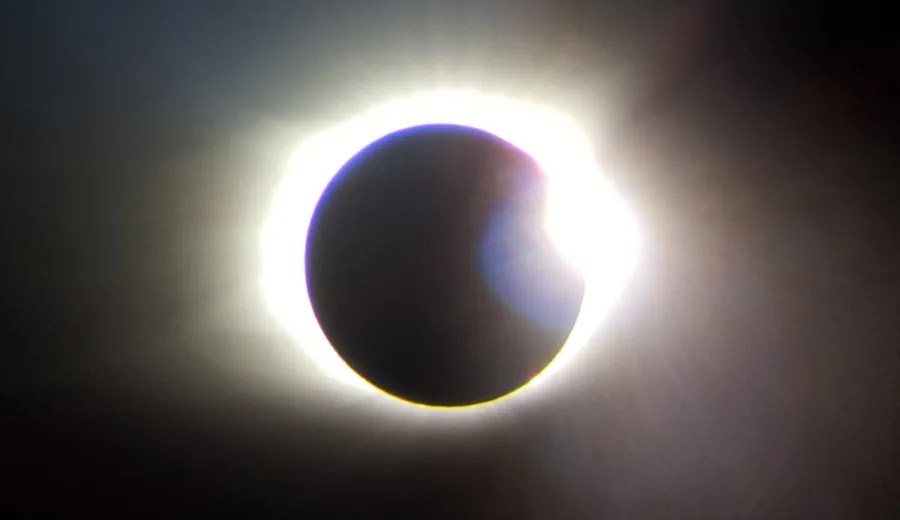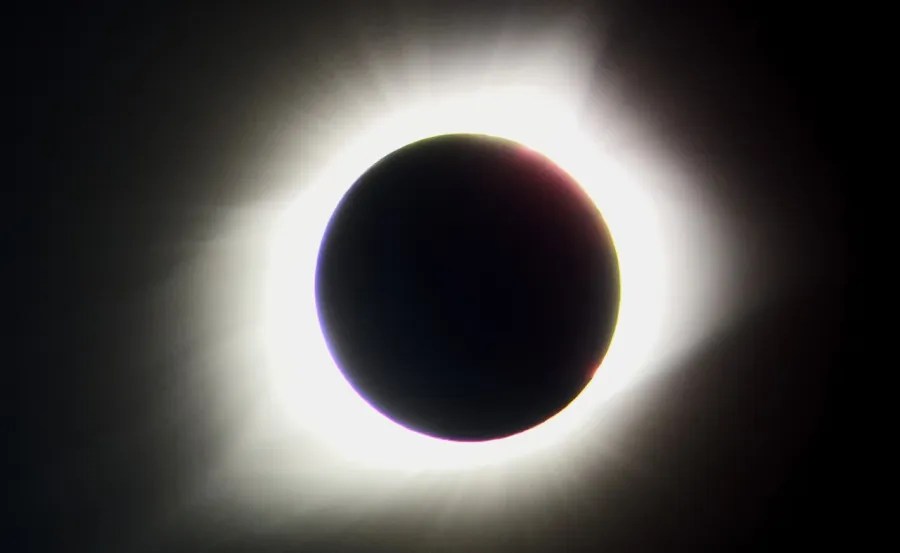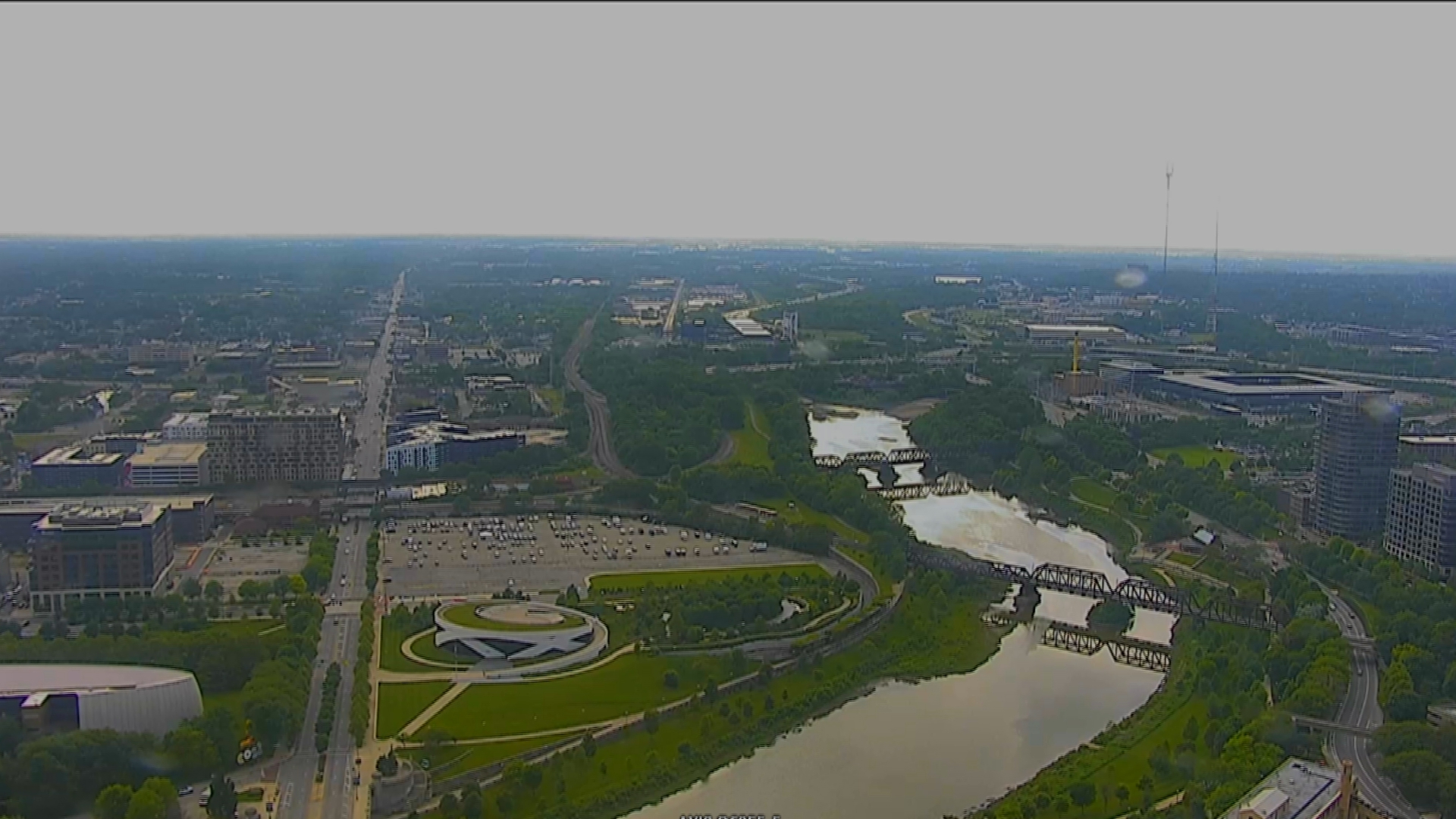COLUMBUS, Ohio (WCMH) — A rare total solar eclipse will be visible over a portion of Ohio on the afternoon of April 8.
The corridor of totality, 124 miles wide, will pass over the northwestern half of the state. More than 30 million Americans will be in the path of totality that will extend from Texas to New England, and cross 13 states.

“The total solar eclipse is like a once-in-a-lifetime opportunity,” said Brad Lepper, curator and senior archaeologist at The Ohio History Connection. “It’s the most spectacular thing, I think, you can witness in the sky, and the changes it has in the environment.”
Last total solar eclipse visible in Ohio
On August 21, 2017, central Ohio was visited by a partial solar eclipse that covered about 86 to 88 percent of the sun, with the path of totality through northern Missouri and southwestern Kentucky.
These photographs during the 2017 eclipse were taken in Wyoming by Don Stevens, director of Perkins Observatory at Ohio Wesleyan University in Delaware.


Remarkably, the last total solar eclipse visible (not an annular eclipse) visible in Ohio occurred on June 16, 1806. The next one will not happen until 2099, so this is a big deal.
Stevens said that Tenskwatawa, the brother of Shawnee chief Tecumseh, correctly forecasted the 1806 eclipse–a prophesy that had historical significance.
“When the eclipse occurred, Tecumseh was able to use the prediction given to him by his brother — The Prophet — to unify the tribe,” said Stevens. Mystery surrounds how Tenskwatawa came up with the prediction, which was initiated by a challenge from William Henry Harrison, then governor of the Indiana Territory, and later the ninth president of the U.S.
“When the eclipse occurred, of course, this proved Tecumseh is correct and his brother to be a prophet. Tecumseh used the event to unify the tribes,” Stevens said.
How often do total solar eclipses occur?
Earth experiences total solar eclipses on average once every 18 months, but the next event will not happen in the U.S. until 2044, and again in 2045.
The 18.6-year lunar cycle determines the types of eclipses and where they occur on Earth’s surface, a result of wobbles in the moon’s orbit.
Lepper, who has spent countless hours at the Newark Octagon Earthworks and Hopewell Ceremonial Earthworks, a newly established World Heritage site constructed 2,000 years ago, explained that the 20-acre circle and 50-acre octagon are perfectly aligned with the northernmost rise of the moon.
“All eight of the full rise points and full set points define that 18.6-year-long lunar cycle are built into this architecture,” Lepper said. Ancient peoples clearly had a remarkable scientific understanding of the celestial motions. “The main axis points to the northernmost rise of the moon.”
The Newark Earthworks, along with six additional Hopewell Ceremonial Earthworks, were added to the UNESCO World Heritage List in September 2023.
What causes a total solar eclipse
The moon’s shadow is quite small with respect to Earth’s surface. A total solar eclipse occurs when the moon passes between the sun and Earth in its orbit in a perfect alignment that projects the moon’s shadow and blocks all incoming sunlight for up to several minutes.
The sun is 400 times larger than the moon, so a total solar eclipse requires the moon to be 400 times closer to Earth than the sun.

The outermost atmosphere of the sun, called the corona, will make a rare appearance during totality, when plasma (ionized gas) will stream into space. As an added bonus, solar activity will be near peak in its 11-year cycle.
When will the total solar eclipse be visible in Ohio?
The Great American Eclipse of April 8, 2024, will begin in Columbus at 1:55 p.m. EDT and achieve peak coverage (99.7%) at about 3:15 p.m. in the city, before ending at 4:27 p.m. Areas just to the north and west will experience totality, when skies will grow dark as night.

Areas in far northwestern Franklin County will achieve totality for a little more than a minute.
How does this eclipse differ from an annular eclipse?
You may recall there was an annular solar eclipse last Oct. 14 in 2023? The path ran from coastal Oregon southeastward to Texas, Mexico and Central America. Ohio only saw 30 to 40 percent coverage of the sun (more evident in the southwestern corner of the state), which peaked around 1:07 p.m., according to NASA.
An annular eclipse occurs when the moon passes between the sun and Earth near its farthest from Earth (apogee). During totality, a bright “ring of fire” appears around the sun because the moon incompletely blots out the solar disk from the viewpoint of Earth.
The path of totality of an annual solar eclipse brushed northwestern Ohio on May 10, 1994.
Eclipse eye safety reminders
Remember, never to look up at the sun during a solar eclipse, or attempt to shield your eyes, due to the risk of permanent vision loss. The only safe way to view a solar eclipse is to use ISO-certified protective eyewear specifically designed for eclipse viewing. Peering through binoculars, a camera lens, or a telescope without an approved safety filter, could also result in serious damage to eyesight.
















